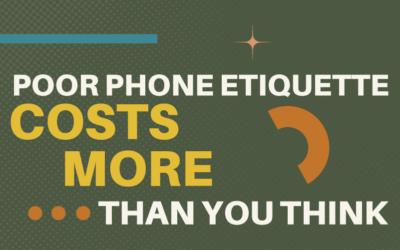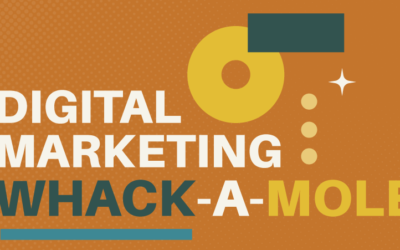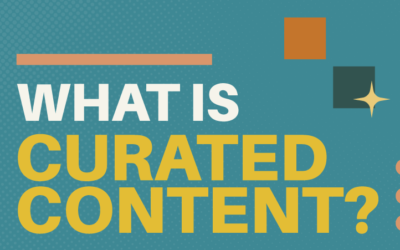This blog details some of the more common and easily correctable digital marketing mistakes small businesses make — and what you can do to fix them.
Articles By
Peter Losh
SEO Is Your Website’s Foundation, Not a Coat of Paint
Search engine optimization is a complex and ever-evolving field.
To succeed, you need a solid understanding of how search engines work, what people are searching for, and how to reach your target audience. You should be up-to-date on industry trends and Google algorithm changes.
Above all, you should consider SEO at the outset of any design process or content initiative, not last, when the horse has already left the barn.
Why Poor Phone Etiquette Costs More Than You Think
A plumbing and HVAC company can pay $100 or more for a lead in a competitive market like metro Los Angeles. And if calls and messages go unanswered, or your tone is brusque, the caller will leave for a competitor with better phone manners.
Digital Marketing Whack-a-Mole: 15 Fibs & Fallacies That Won’t Stay Down
Here, we’ve listed some of the more persistent and pernicious fallacies we encounter in our dealings with people outside — and sometimes inside — our hallowed digital marketing halls. Like the proverbial Whack-a-Mole, they always seem to reappear.
SEO Is Dead. Long Live SEO!
Like the highly adaptable fruit fly, SEO has evolved. And today, with fierce competition for even modest keywords, SEO matters more than ever. Not the cheap tricks that could vault a worthless page to position #1, but time-tested SEO principles.
What Is Curated Content? Curation vs. Creation
Curated content is a collection of information, resources, news, and other material assembled by a “curator” to provide an overview of a topic.
It can include news sites, blogs, social media platforms, and even traditional print media. The goal is to look at a given topic comprehensively, usually through links to articles, videos, and other resources.
Curation vs. Creation
The distinguishing factor between curated and created content is that curated content isn’t original. Instead, it’s a collection of the best (or most relevant and recent) information.
The curator’s job is to find, organize, and present this information in a helpful and engaging way.
Done well, curation can save time, build authority on a topic, and give you a chance to share your perspective with the world.
Here are just a few ideas:
Share a weekly or monthly roundup of the best content you’ve found on a topic like digital marketing or SEO.
Create an infographic that highlights key data points from multiple sources.
Write a blog post that pulls quotes, statistics, and other data from different articles to tell a cohesive story.
Share an album of images related to a theme or topic, along with your thoughts on each.
The key to successful curation is adding value. Don’t simply regurgitate what others have said — take the time to add your analysis, commentary, and insights. This will make your content unique and worth reading.
Can Curated Content Rank in Google?
It can, but not as readily as original content. Google (and other search engines) place a premium on originality.
So if you want to rank with curated content, be careful about how you present it.
Make sure each piece of content stands on its own.
Use original titles and descriptions.
Add your insights and analysis.
Cite your sources clearly and link to them.
Following these tips, you’ll give your curated content the best chance to rank and drive traffic to your site.
Curation vs. Plagiarism
Plagiarism is presenting someone else’s work as your own without giving credit to the original author. It’s an offense that can get you into legal trouble.
Curation, on the other hand, is simply sharing organized information from other sources. It can be a great way to build authority and share your perspective on a topic.
Curation is perfectly legal and ethical — as long as you do it right and cite your sources.
How Can You Tell If Something Has Been Plagiarized?
There are a few telltale signs:
It sounds exactly like the source.
It uses the exact words, phrases, organization, and language patterns as the source.
It includes information that’s not common knowledge.
There are no citations or links to the source.
If unsure, run the copy through a plagiarism checker like Copyscape.
The licensed version of Grammarly, a writing platform, has a built-in plagiarism checker. I use it whenever I’m sifting through an old client site to determine what’s original (and worth keeping) and what isn’t.
Curation vs. Citation
Curation and citation are closely related, but they’re not identical.
A citation is simply a reference to a source. It doesn’t necessarily mean you endorse the content or agree with it.
For example, if you wanted to cite a Forbes article on curation, you might include a link to it in your blog. You’re not saying everything in the Forbes article is true — you’re just providing a reference for your readers.
In contrast, curation implies that you’ve read and vetted the content and chosen to share it because it’s valuable. When you curate content, you often include your thoughts and commentary along with the original piece.
Curation vs. Aggregation
Aggregation is similar to curation, but it’s usually automated. Aggregated sites like Google News or AllTop collect and display content from other sources without human involvement.
But curation is a manual process. Someone has to read and select the pieces to share. This allows for greater quality control but also means that curation takes more time and effort than aggregation.
How to Curate Content Like a Pro
Find sources you trust. This will keep the quality of your content high.
Set up Google Alerts to notify you anytime new content is published on your curating topic.
Use a content aggregator. There are many good ones, like Feedly and Inoreader. They make it easy to organize and track the sources you want to follow.
Curate manually at first. Once you know what’s out there and what your audience wants, you can automate some tasks.
Use social media to find content. Twitter, in particular, is a gold mine.
Don’t forget about email. Newsletters are still a great way to share curated content.
Always give credit where it’s due. This is the most important rule of content curation. Include links to the source of any content you share.
Follow these tips, and you’ll curate quality content in no time. Your audience will thank you for it, and Google may reward you.
UX for E-Commerce Dummies: Always Test Your Assumptions
UX means “user experience” or how someone feels about your website.
Bad UX is the bane of ecommerce and conversion. And the closer it occurs to a transaction point, the deadlier it can be.
Frequently Asked Questions about Small Business SEO
Search engines launch major algorithm updates regularly, altering the SEO ranking formula. What worked yesterday may not work today. Plus, your competitors may already pay someone to stay on top SEO and target the same keywords that drive your leads and calls.
Most internet users will click on the first few organic results. Are you willing to drop to page two or lower?
How to Add Your Business to Google Maps
There’s no way to add a business to Google Maps — at least not directly.
You can’t buy your way in, and the only way to earn your way in is to take specific steps that over half of all small businesses fail to take.
Yes, you read that right. Over half of small businesses fail to do what’s necessary to appear in Google Maps and the coveted Map Pack of local search results.
Frequently Asked Questions about Paid Search for Small Business
Paid search yields faster results than any other form of online advertising. It’s like turning on a traffic spigot to your high-conversion pages.
It can target specific audiences, keywords, and geographical areas, and paid ads always appear above the organic results. You have complete control over your budget and the keywords you bid on.









